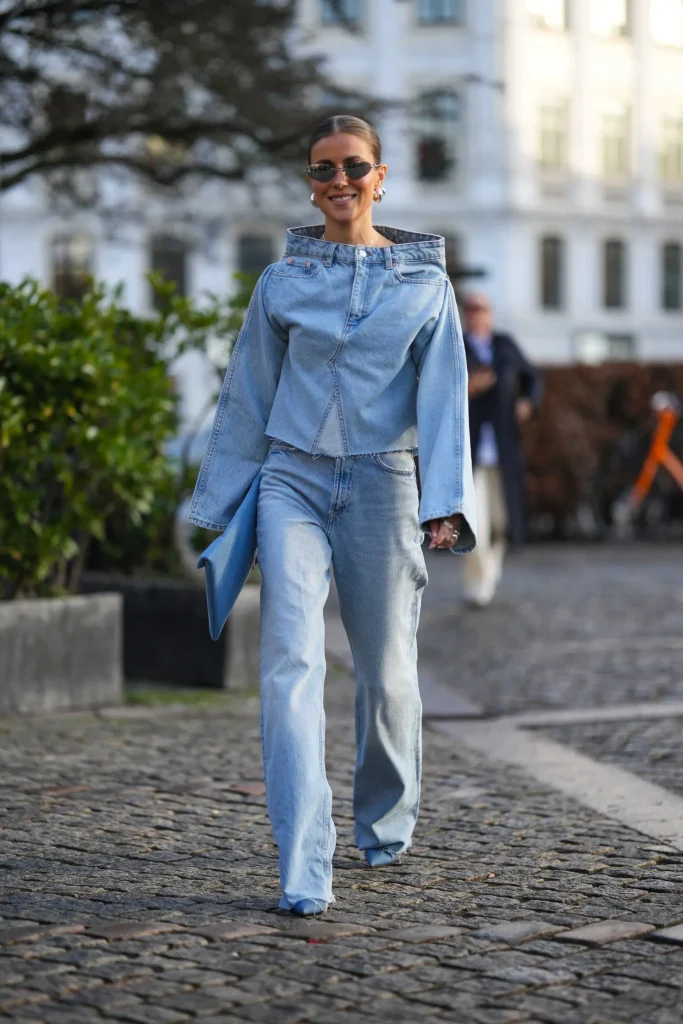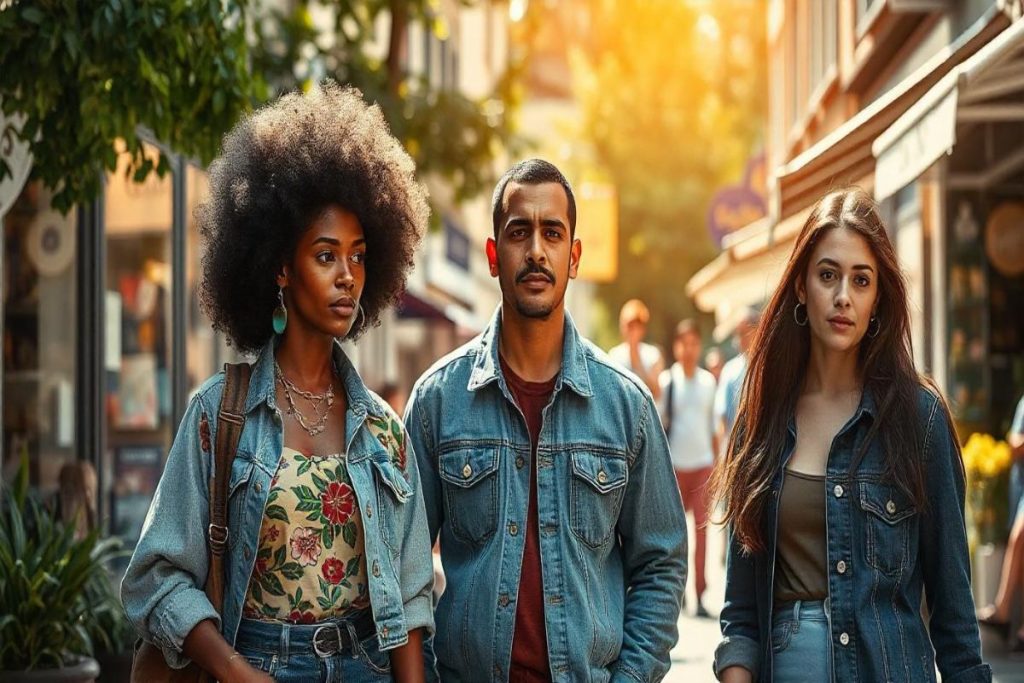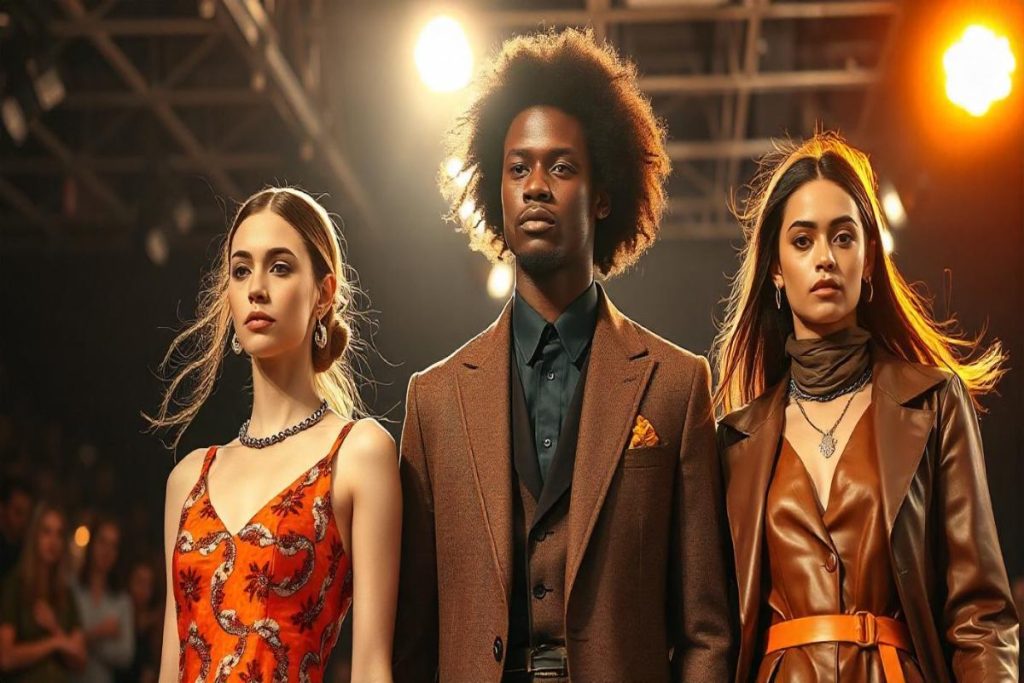Copenhagen fashion is rapidly becoming a beacon of innovation and empowerment in the global fashion landscape, particularly through the lens of female designers in Denmark. As the 19th Copenhagen Fashion Week unfolds, it’s clear that women are not only disrupting traditional norms but are also leading some of the most exciting labels, showcasing a range of creativity and diversity. With 26 of the 42 participating brands spearheaded by women, this shift celebrates the role of gender equality in fashion—promoting women-led fashion brands that challenge outdated perceptions. These inspiring female creatives are not just participating but are driving a narrative about the importance of women in fashion, advocating for change within an industry known for its male dominance. This movement highlights the unique Scandinavian approach to fashion, where collaboration and support among female designers thrive, paving the way for a more inclusive and equal future.
The fashion scene in Copenhagen is undergoing a transformative shift, characterized by an increasing number of women taking the reins in leadership roles across various fashion houses. This evolution is reflected during prominent events like Copenhagen Fashion Week, where a significant portion of the showcased collections come from women-led initiatives. The rise of talented female designers in Denmark is crucial to redefining the industry’s standards, championing gender equality, and emphasizing the need for greater representation in creative roles. By fostering an environment where women can create, collaborate, and innovate, Copenhagen not only stands out as a hub of style but also as a progressive model for other fashion capitals. This cultural transformation underscores the vital contributions of women in the fashion narrative, challenging long-held conventions and inspiring future generations.
The Emergence of Women-Led Fashion in Denmark
Denmark has increasingly become a focal point for female designers, especially during Copenhagen Fashion Week (CPHFW). This global platform not only showcases creative talent but also shines a spotlight on the burgeoning influence of women in the fashion industry. With 26 out of the 42 participating brands in CPHFW being led by women, it is evident that a seismic shift is occurring. These women are not merely participating; they are revolutionizing the industry standards that have long been dominated by male perspectives. Female designers in Denmark are using their influence to reshape narratives around aesthetics, size inclusivity, and, importantly, the very definition of success in fashion.
This emergence can be traced back to Denmark’s broader social framework, which promotes gender equality and empowerment. Policies that enhance wage equality and facilitate women’s reintegration into the workforce after motherhood create a supportive environment for women-led fashion brands to thrive. The success of these brands goes beyond monetary gains; they are creating a cultural shift that champions inclusivity and celebrates the diversity of the female experience. This newfound visibility in Danish fashion is paving the way for future generations of female designers to push boundaries, challenging the status quo upheld by their male counterparts.
Copenhagen Fashion Week: A Platform for Change
Copenhagen Fashion Week stands out not just as a showcase for innovative design but as a progressive platform advocating for gender equality in the fashion world. The participation of a significant number of female-led brands at CPHFW emphasizes the festival’s role in promoting inclusivity within the industry. Designers like Cecilie Bahnsen are attracting attention not just for their aesthetic innovations, but for the messages of empowerment coded into their work. They illustrate the importance of designing for women, by women, which resonates well with audiences seeking authenticity and representation.
Moreover, Copenhagen Fashion Week is emerging as a benchmark for how other fashion weeks worldwide can embrace progressive ideals. When seen in the context of global fashion capitals, the female representation at CPHFW is significantly higher, showcasing a potent model of what can be achieved through collaboration and community support among women in the industry. As more female designers gain visibility and acquire leadership roles, the conversations around gender equality in fashion are becoming more mainstream, setting an example that could inspire similar mobility in other fashion hubs.
Breaking Through the Glass Ceiling in Fashion
Despite the impressive statistics coming from CPHFW, the reality of gender disparity in high-ranking positions across the global fashion industry remains stark. Research indicates that while the majority of fashion students are female, there is a disconcerting gap when it comes to women in leadership roles. With only a handful of women appointed as creative directors at leading luxury houses, it is clear that breaking the glass ceiling in fashion requires continued effort. Female designers like Stine Goya are not just passive witnesses to this struggle; they are actively working to redefine what leadership looks like within their respective brands.
This initiative is about more than personal accomplishment; it is rooted in a deeper desire to challenge the prevailing biases within the industry. By establishing their own brands, women in Denmark are creating opportunities not just for themselves but for future generations of female designers. This grassroots movement toward equality is essential for altering the industry landscape. The stories of these women and their journey emphasize the importance of mentoring and solidarity in overcoming structural challenges. As such narratives gain momentum, they offer a refreshing counter-narrative to the traditional, male-centric fashion industry.
A New Perspective on Women in Fashion Design
The cultural expectations and norms surrounding fashion have historically been influenced by male designers, often leading to a skewed perception of femininity. However, women-led brands in Denmark are boldly challenging this notion by focusing on comfort and practicality, reflecting the realities of women’s lives. Designers like Anne Sofie Madsen and Cecilie Bahnsen emphasize creating pieces that cater to diverse body types and the need for functional yet stylish clothing. This pivot towards comfort represents a broader understanding of what women seek in fashion, making it clear that female voices should lead the conversation.
In a transformative approach, these designers are not only prioritizing aesthetic qualities but are also reinterpreting the very concept of beauty within the fashion landscape. By presenting designs that resonate with women’s preferences and lifestyles, they are fostering a more inclusive definition of fashion. This new perspective is not just beneficial for consumer satisfaction; it also contributes to a wider cultural shift in the fashion industry, allowing for a more authentic exploration of femininity that challenges outdated ideals upheld by previous generations.
Nurturing Work-Life Balance in Fashion
The fashion industry has a well-deserved reputation for its grueling workloads and high-stress environments, which are often detrimental to personal well-being. However, in Denmark, there is a notable shift towards prioritizing work-life balance within women-led fashion brands. Designers like Madsen and Bahnsen are setting an example by implementing flexible working hours and fostering supportive work environments that accommodate personal lives, including parenting. This approach emphasizes that success in fashion does not have to come at the expense of one’s life outside of work.
This culture of flexibility and understanding not only empowers women in the industry but also enhances creativity and productivity. When designers can balance their professional and personal obligations, they can dedicate themselves fully to their craft, leading to higher-quality outputs and more innovative design solutions. By prioritizing mental health and well-being, these brands are actively reshaping the landscape of the fashion industry, demonstrating that caring for oneself and one’s team is essential for sustainable success.
Collaboration as a Catalyst for Innovation
The spirit of collaboration among female designers in Denmark is becoming a cornerstone of the country’s fashion scene. Unlike traditional competitive environments, many women in fashion are choosing to support one another, fostering a strong network of creatives who share resources, knowledge, and inspiration. This cooperative approach is not only enriching the designs coming out of Denmark but is also setting a powerful example for women in the industry globally. Designers share insights, promote one another’s work, and collaborate on collections, creating a sense of community that is both empowering and fruitful.
Additionally, this collaborative ethos is nurturing innovation and pushing boundaries in the design process. By working together, female designers can draw on each other’s strengths, challenge conventional norms, and explore new avenues of creativity. This environment encourages risk-taking and experimentation, leading to fresh and exciting offerings that challenge the established hierarchies of the fashion world. Ultimately, collaboration among female designers in Denmark is proving that unity and cooperation can lead to exceptional growth and success in an often gender-biased industry.
Growing Influence of Female Designers on Global Trends
As Copenhagen continues to rise as a hub for innovative fashion, the influence of its female designers reverberates beyond Danish borders. The designs and philosophies emerging from this vibrant scene are beginning to set global trends, showcasing a refreshing perspective on femininity, sustainability, and inclusivity. The unique blend of practicality and creativity reflected in the work of Danish designers is attracting attention from fashionistas around the world. As they gain recognition, these women are not only changing the landscape of fashion in Denmark but are also increasingly shaping global discourse surrounding gender equality in the industry.
This international spotlight elevates the conversation around female empowerment and diversity in fashion, inspiring women worldwide to pursue creative careers and claim their space in the industry. By showcasing collections that celebrate individuality and challenge existing stereotypes, designers from Copenhagen set a compelling standard for what the fashion industry can achieve when women lead the charge. With global audiences resonating with the values and aesthetics of these female-led brands, it’s clear that the influences from Copenhagen are paving the way for a new era in fashion.
The Role of Education in Supporting Women in Fashion
Education plays a crucial role in fostering the next generation of female designers, equipping them with the necessary skills and knowledge to thrive in a competitive industry. Institutions in Denmark, which boast a high percentage of female students in fashion programs, are increasingly focusing on cultivating talent while addressing the systemic barriers that women face in the industry. Educational programs that emphasize real-world applications, mentorship opportunities, and exposure to successful female leaders can empower young women to imagine a future in fashion that is equitable and inclusive.
Moreover, educators and established designers within Denmark’s fashion community are actively mentoring emerging talent, providing guidance and encouragement in what is often a challenging landscape. By sharing insights and experiences, they help demystify the pathways to success within the fashion industry, emphasizing the importance of resilience and innovation. This commitment to nurturing future female designers reflects a collective vision of a more equitable fashion ecosystem and underscores the importance of education as a tool for driving change within the industry.
Copenhagen’s Commitment to Gender Equality in Fashion
Copenhagen has positioned itself as a beacon of gender equality in fashion, making tangible strides toward creating an inclusive environment for female designers. Initiatives and policies that prioritize equality further bolster this commitment, ensuring that women have equal access to opportunities within the fashion landscape. This cultural framework encourages women to pursue entrepreneurial endeavors without the constraints commonly imposed in other regions, facilitating an environment where creativity can flourish unimpeded. The city’s progressive mindset serves as a model for other fashion capitals striving for similar levels of gender parity.
The proactive engagement of industry stakeholders also plays a vital role in advancing gender equality. Advocacy efforts, campaign initiatives, and collaborative projects are collectively spearheading efforts to influence change at a global level, demonstrating the collective power women can wield in reshaping the industry. By adhering to this commitment, Copenhagen is not only sharpening its competitive edge in the international fashion market but also paving the way for other cities to adopt similar equitable practices. As the fashion sector continues to evolve, Copenhagen’s thorough dedication to gender equality stands as a powerful testament to the potential of female leadership and collaboration.
Frequently Asked Questions
What is unique about Copenhagen fashion in terms of female designers in Denmark?
Copenhagen fashion stands out for its strong presence of female designers, with 26 out of 42 brands participating in Copenhagen Fashion Week being founded and led by women. This trend showcases a shift in the fashion industry towards gender equality, empowering women to lead and redefine fashion on their own terms.
How does Copenhagen Fashion Week support women in fashion?
Copenhagen Fashion Week actively supports women in fashion by providing a platform for female-led brands to showcase their work. The event emphasizes collaboration and celebrates the unique perspectives that women bring to the industry, fostering a supportive ecosystem for female designers.
What challenges do women face in the fashion industry, particularly in Copenhagen?
Women in the fashion industry face significant challenges, including underrepresentation in creative roles and leadership positions. Despite a high percentage of female students in fashion schools, many struggle to gain visibility and authority in a predominantly male-dominated environment. However, Copenhagen is witnessing a shift, with women establishing their own brands and pushing for equality.
How do Copenhagen’s female designers approach work-life balance?
Female designers in Copenhagen prioritize work-life balance by fostering flexible work environments. Many, like Cecilie Bahnsen and Anne Sofie Madsen, allow for adaptable schedules that accommodate family life, focusing on holistic approaches to their careers without sacrificing personal well-being.
What role does gender equality play in the success of women-led fashion brands in Copenhagen?
Gender equality is pivotal in the success of women-led fashion brands in Copenhagen. With supportive policies promoting equality and a collaborative community of female creatives, women are empowered to take up space in the industry and build brands that resonate with contemporary values of inclusivity and balance.
How does the ‘Law of Jante’ influence female designers in Copenhagen?
The ‘Law of Jante’ fosters a culture of humility and equality in Copenhagen, contributing to a collaborative environment for female designers. This philosophy encourages women to support one another, share ideas, and collectively push for innovation in the fashion industry, setting a positive precedent for gender equality.
What impact do Copenhagen’s women-led brands have on international fashion standards?
Copenhagen’s women-led brands are inspiring a reevaluation of international fashion standards by introducing modern, inclusive designs that prioritize comfort and individuality. These brands challenge traditional notions of beauty and success in fashion, promoting a more diverse representation of women on and off the catwalk.
Are there mentorship opportunities for women in the Copenhagen fashion scene?
Yes, the Copenhagen fashion scene is becoming increasingly supportive, with mentorship opportunities available for emerging female designers. Established designers often share their experiences and resources, creating a nurturing environment that empowers the next generation of women in fashion.
| Key Points | Details |
|---|---|
| Leadership Gap | In an industry dominated by men, only 4 out of 17 new designers appointed to top roles in luxury fashion are women. |
| Fashion Week Statistics | 26 out of 42 participating brands in Copenhagen Fashion Week are female-led. |
| Cultural Impact | Copenhagen is creating an ecosystem for female-led brands and promoting gender equality, which is fostering independent creativity. |
| Work-Life Balance | Danish designers prioritize a holistic work-life balance, allowing flexible work hours, especially for mothers. |
| Role of Community | A strong community developed around the ‘Law of Jante’ encourages collaboration and support among female designers. |
Summary
Copenhagen fashion is emerging as a vital force in the fashion industry, particularly as women redefine traditional power dynamics and succeed in leading their own labels. The 19th Copenhagen Fashion Week highlights this shift with a significant representation of female-led brands, proving that the city is at the forefront of a new fashion era. Inspired by Danish cultural values like equality and community support, these women are not only fostering their own success but encouraging other female creatives to break through barriers. This collaborative and innovative spirit in Copenhagen showcases a promising future for women’s empowerment in the fashion world.



